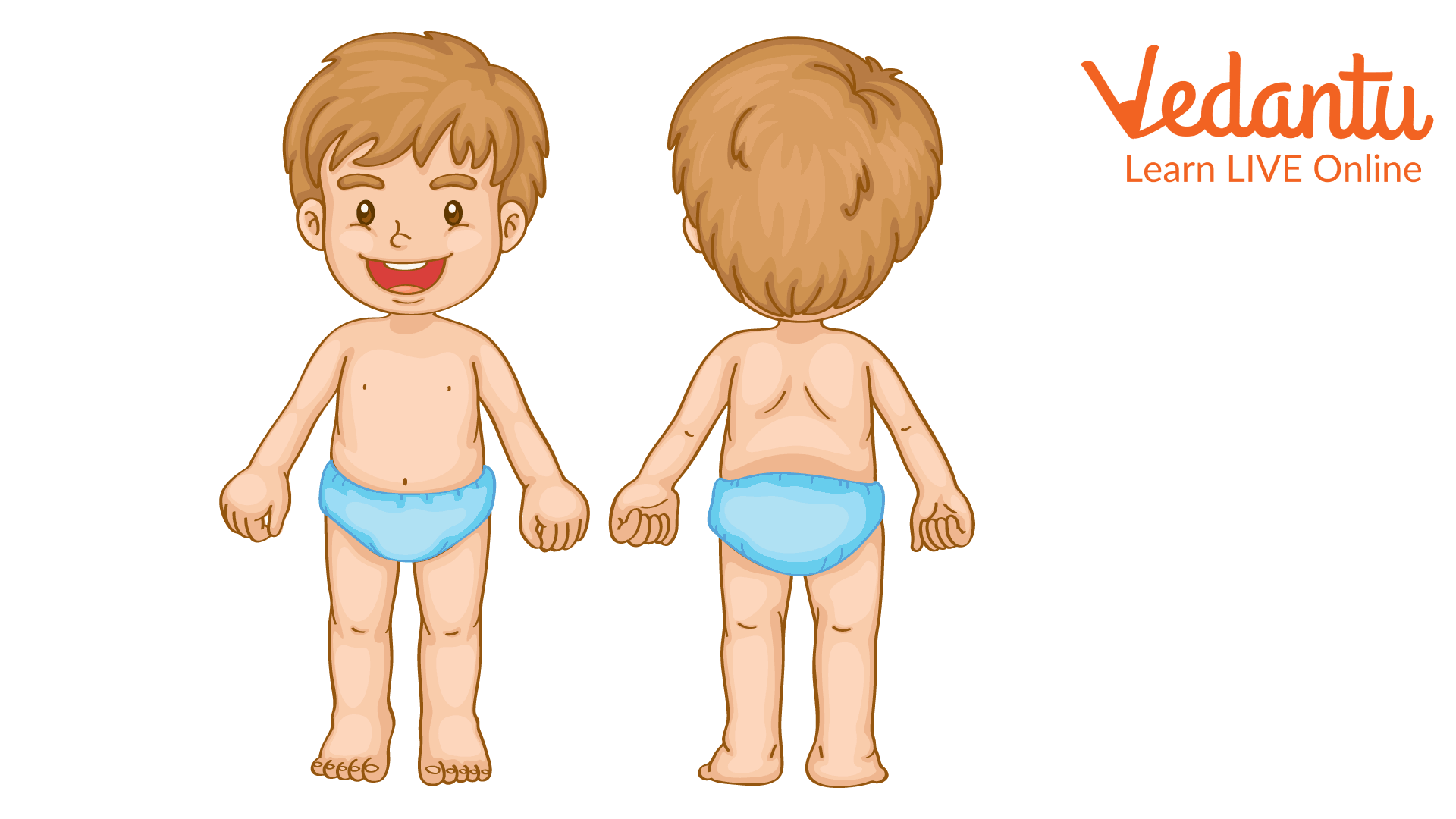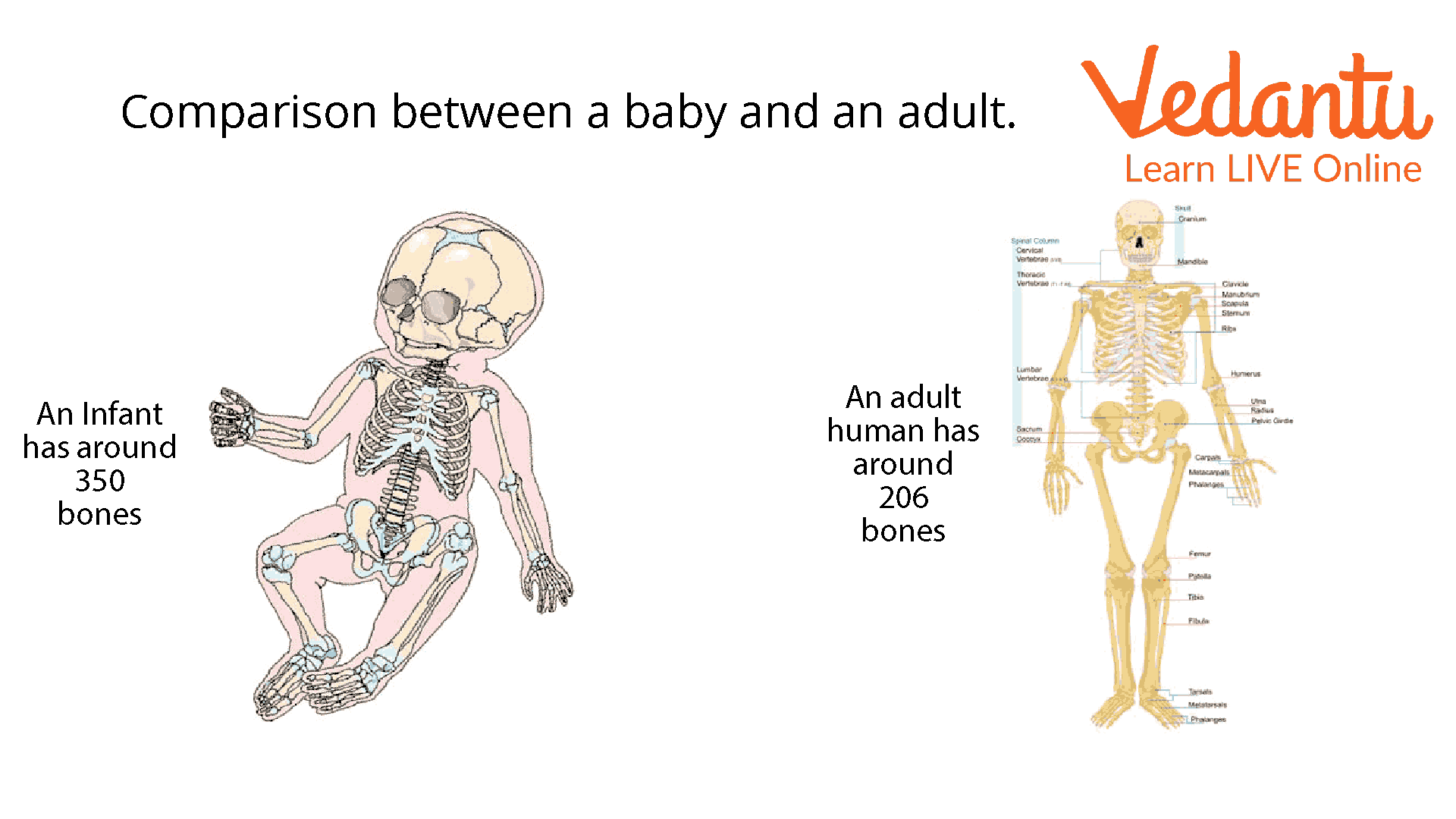




Introduction
Babies have their bones delicate right from their birth. There are 206 bones in the human skeleton, including 80 axial bones, excluding teeth or sesamoid bones (tiny bones found within cartilage). This includes the head, face, hyoid, auditory, trunk, ribs, and sternum. The appendicular bones are made up of 126 bones.
In contrast, babies are born with 300 bones. As they grow towards adulthood, their bones accept growth as well. What promotes the growth of babies in general? Calcium! Calcium plays an important role. As we grow during childhood, the cartilage expands and is gradually replaced by bone with the aid of calcium.
Growing Bones in Children
Kids develop so quickly. A baby grows around 10 inches in the first year of life and keeps growing by several inches yearly, especially during adolescence. Growing bones are responsible for all of this growth. About 300 bones are present in babies at birth, compared to only 206 in fully developed adults. A baby's bones are very small compared to an adult's. Many of these bones join together to form larger bones as they mature. Until their mid-20s, when their bones reach their maximum size, they continue to grow.
Bones in a Human Baby
Are the bones in a baby different from adults? If yes, why?
It is because human beings are made up of skeletons. These skeletons provide structure to our bodies. Bones are typically made up of a protein known to be Collagen. It is also built up with a mineral called Calcium phosphate, which has been proven to support and make collagen's framework structure strong and healthy. Further speaking, bones are composed of several types of bone tissues:
Periosteum
Cancellous
Compact bone
Bone marrow
Describe the Physique of the Child
There are different types of bones in a human baby. The characteristics of the bones in a human baby are as follows:
A human baby consists of 300 bones during birth.
The juvenile bone in a human baby is more porous than an adult's.
A child's bone is more prone to bend than an adult’s.
Most babies have cartilage.
The outer layer surrounding the bone in a baby, commonly known as the periosteum, is much stronger than in adults.

Physique of a Child
How Do Bones Grow?
As bones develop, bones go through many changes. Most of a baby's bone composition at birth is cartilage, a flexible and soft material. The cartilage in a baby's bones enlarges as they grow. Ossification is the process by which bone replaces cartilage over time and with a little assistance from calcium. Ossification, to put it simply, is the process through which bone replaces cartilage.
Layers of calcium and phosphate salts build up and enclose the cartilage cells during ossification. Eventually, the cartilage cells perish. The cartilage cells leave behind microscopic spaces in the bone. Osteoblasts are specialised cells deposited into empty areas by blood vessels.
What Happens When Bones Stop Growing?
While they do not get any longer, bones might get thicker as we age. Bones frequently become thicker in response to greater muscle activity, such as weight training. Bones can self-heal and mend.
Bone turnover occurs continuously throughout life but becomes less rapid as we age. The body builds new bones more quickly than it destroys old ones during childhood and adolescence, contributing to bone mass development. The body begins to add new bones more slowly beyond age 20. We eventually lose bone mass when the body removes old bone more quickly than it creates new bones.

Comparison Between a Baby and an Adult
Conclusion
Bones in a body are the most important for any living being as it helps us to stand properly and have a proper structure. Early in pregnancy, the fundamental shape of each baby's bones is formed according to instructions from several genes. The whole skeleton of the unborn child has been laid out by the time about seven weeks pregnant. The majority of bones first develop as cartilage, a strong yet flexible tissue that later hardens into bone.
FAQs on Facts About Bones in Babies
1. What do babies have instead of bones?
When babies are born, some of their "bones" comprise flexible cartilage. Some cartilage hardens and becomes bone as the infant grows, and some bones join together. Bone growth in your child won't cease until she is in her late teens or 20s.
2. What bone are you not born with?
The kneecap is one instance of a bone that newborns lack or patella. Between the ages of 2 and 6 years old, the kneecap begins to significantly harden into the bone from its initial state of cartilage.
3. Which bones stop growing first?
The growth plates mature throughout puberty, and by the time puberty is over, they have fused and have stopped expanding. The hands, feet, arms, and legs are the first parts of the skeleton to stop developing, followed by the arms and legs, and the spine is the last part of the skeleton to stop growing.





















